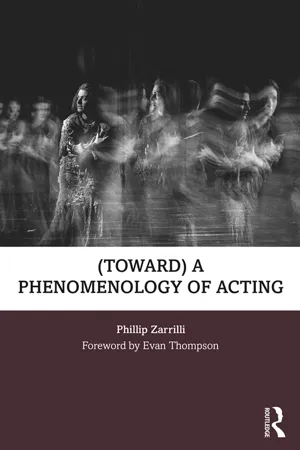all touch sensation (or sensation of any kind) is ultimately in the service of action. Our touch circuits are not built to be faithful reporters of the outside world but are constructed to make inferences about the tactile world based upon expectations – expectations derived from both the historical experience of our human ancestors and from our own individual experiences.
Neurosurgeon Paul Kalanithi provides a precise and compelling account of his performance of a temporal lobectomy – a procedure to remove the hippocampus in order to cure epilepsy. For Kalanithi and other highly experienced and skilled surgeons, their experience of time when in the operating theatre is completely altered in that “two hours could feel like a minute” and therefore “you have no sense of [time] passing” (2016:104). A temporal lobectomy is a highly complex procedure,
requiring gentle dissection of the hippocampus off the pia, the delicate transparent covering of the brain, right near the brain stem … The patient was intubated, the attending and I were scrubbed and ready to begin. I picked up the scalpel and incised the skin just above the ear, proceeding slowly, trying to make sure I forgot nothing and made no mistakes. With electrocautery, I deepened the incision to the bone, then elevated the skin flap with hooks. Everything felt familiar, muscle memory kicking in. I took the drill and made three holes in the skull. The attending squirted water to keep the drill cool as I worked. Switching to the craniotome, a sideways-cutting drill bit, I connected the holes, freeing up a large piece of bone. With a drack, I pried it off. There lay the slivery dura. Happily, I hadn’t damaged it with the drill … I used a sharp knife to open the dura without injuring the brain. Success again … I tacked back the dura with small stitches to keep it out of the way of the main surgery. The brain gently pulsed and glistened. The huge Sylvian veins ran across the top of the temporal lobe, pristine. The familiar peach convolutions of the brain beckoned.
(2016:152–154)
Obviously lives depend on a surgeon’s virtuosic ability to achieve sensing as a mode of ‘living communion’ through the development of tactile and auditory awareness. For performers, auditory awareness and deep listening, as well as touch and sensation of all kinds, are optimally developed in one’s training process and then placed in the service of action, doing, and being on stage as shaped by a specific dramaturgy and aesthetic. Later in this chapter and throughout this book, we will return to both auditory awareness and ‘touch’ as two of the primary and too often neglected modes of sensory awareness available for the actor through training and in performance. We will also return to how practitioners absorbed in a practice like surgery experience time in a not dissimilar way to the actor’s experience of time on stage. What should be clear from the example of cardiac surgeons is the necessity of developing the specific authority/kinesthetic/tactile skills and modes of sensory awareness to practice their specialty to a point where that awareness is intuitively deployed in both diagnosis and the practice of surgery.4
Similar structures and lengthy periods of specialist kinesthetic/sensory training and experience are necessary to become a virtuosic practitioner of many practices: taiqiquan, massage therapy, Pilates, violin, ballet, a perfumer, or wine taster. With time and with the guidance of a master teacher, practitioners are able to awaken and attune as appropriate one’s energy, attention, and/or sensory awareness within a specific practice. A practitioner is gradually attuned to and moves toward an optimal, ideal, virtuosic level of attention, awareness, and deployment and channeling of energy necessary for that specific practice. Like surgeons, violinists and massage therapists ideally develop hand/finger/tactile virtuosity; but violinists must also develop their auditory awareness to a point where they are ‘pitch perfect’. Like a surgeon, a good one-on-one Pilates teacher/coach must have expertise in anatomy and physiology, must have kinesthetically mastered her own practice of all dimensions of Pilates practice so that she can fully embody/demonstrate all exercises, and be able to communicate simply and clearly as the teacher/practitioner guides her clients through each exercise in a session. The Pilates teacher optimally is able to guide the individual through a process that engages specific muscle groups, coordinates inhalation or exhalation as required for each exercise, and utilizes specific modes of visualization to gradually enhance the relationship to and efficacy of an exercise. Each practitioner is engaged in making “enactive adjustment(s)” as they engage the specific ‘world’ of their practice (Gallagher 2017:19).
Ballet dancers, concert violinists, or actor-dancers trained in ‘traditional’ modes of performance such as Kerala, India’s kutiyattam or Japanese nō all undergo repetitious kinesthetic forms of technical attunement and training that shapes their embodied practice, consciousness, imagination, and experience toward virtuosity in that practice.5 In contrast, for the vast majority of contemporary actor/performers there is no single, specialist kinesthetic/motor repertoire that must be mastered in order to perform.6 But nevertheless, actors should ideally come to possess specific types of embodied knowledge which simultaneously engage their sensory, perceptual, and cognitive faculties as necessary in the moment of performance. Performers must also learn “to be affected” (Latour 2004:205–206), i.e., they optimally learn how to appropriately open both affective and sensory awareness within/to the tasks/actions at hand. The lack of a single specific technique or skill-set focus for training contemporary actors is both a dilemma and an opportunity.7 It raises several important questions regarding the training of contemporary actors:
- 1 What type(s) of foundational training(s) explore embodied consciousness, ‘open’ and attune an a...
